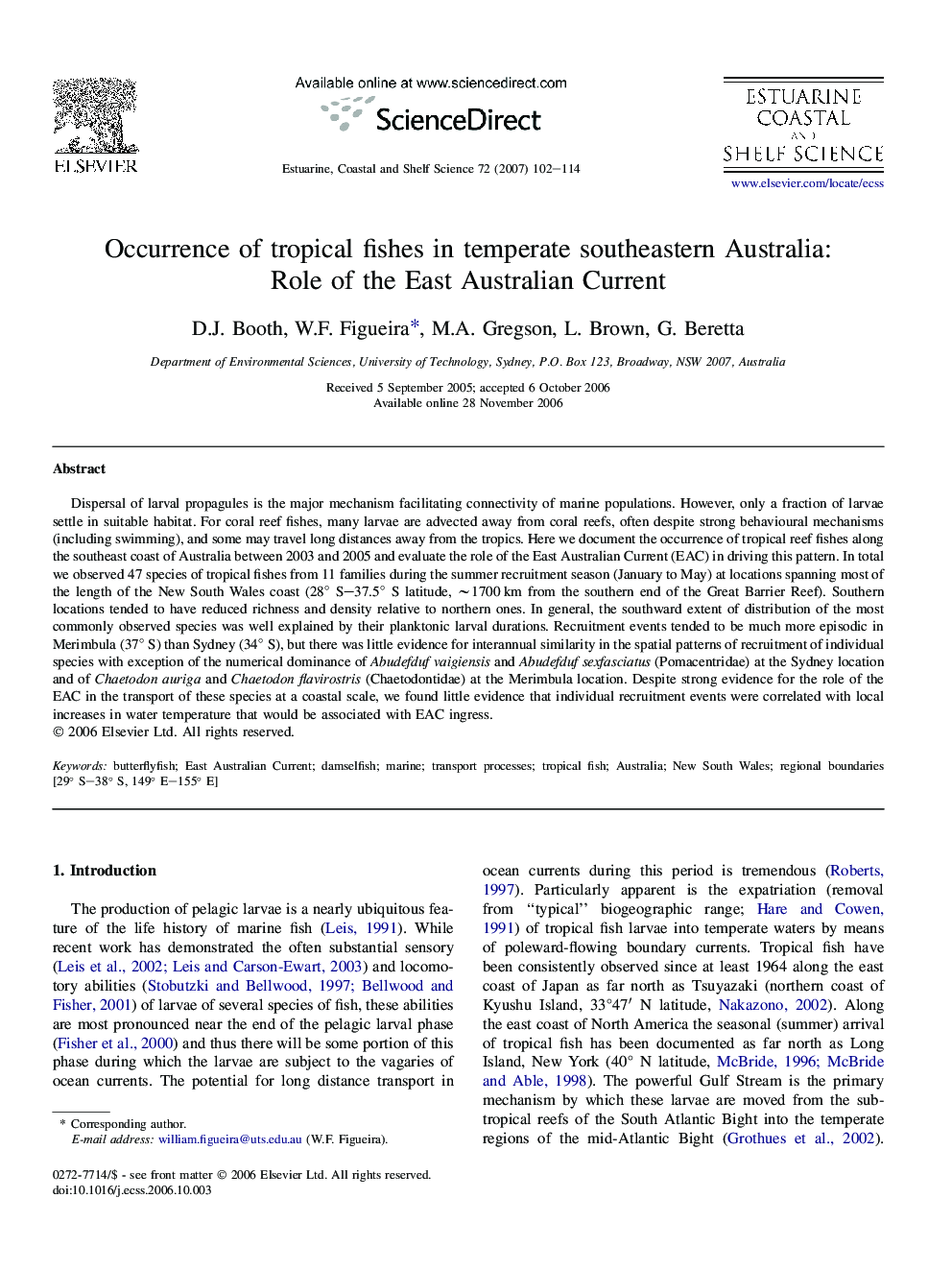| Article ID | Journal | Published Year | Pages | File Type |
|---|---|---|---|---|
| 4541998 | Estuarine, Coastal and Shelf Science | 2007 | 13 Pages |
Dispersal of larval propagules is the major mechanism facilitating connectivity of marine populations. However, only a fraction of larvae settle in suitable habitat. For coral reef fishes, many larvae are advected away from coral reefs, often despite strong behavioural mechanisms (including swimming), and some may travel long distances away from the tropics. Here we document the occurrence of tropical reef fishes along the southeast coast of Australia between 2003 and 2005 and evaluate the role of the East Australian Current (EAC) in driving this pattern. In total we observed 47 species of tropical fishes from 11 families during the summer recruitment season (January to May) at locations spanning most of the length of the New South Wales coast (28° S–37.5° S latitude, ∼1700 km from the southern end of the Great Barrier Reef). Southern locations tended to have reduced richness and density relative to northern ones. In general, the southward extent of distribution of the most commonly observed species was well explained by their planktonic larval durations. Recruitment events tended to be much more episodic in Merimbula (37° S) than Sydney (34° S), but there was little evidence for interannual similarity in the spatial patterns of recruitment of individual species with exception of the numerical dominance of Abudefduf vaigiensis and Abudefduf sexfasciatus (Pomacentridae) at the Sydney location and of Chaetodon auriga and Chaetodon flavirostris (Chaetodontidae) at the Merimbula location. Despite strong evidence for the role of the EAC in the transport of these species at a coastal scale, we found little evidence that individual recruitment events were correlated with local increases in water temperature that would be associated with EAC ingress.
